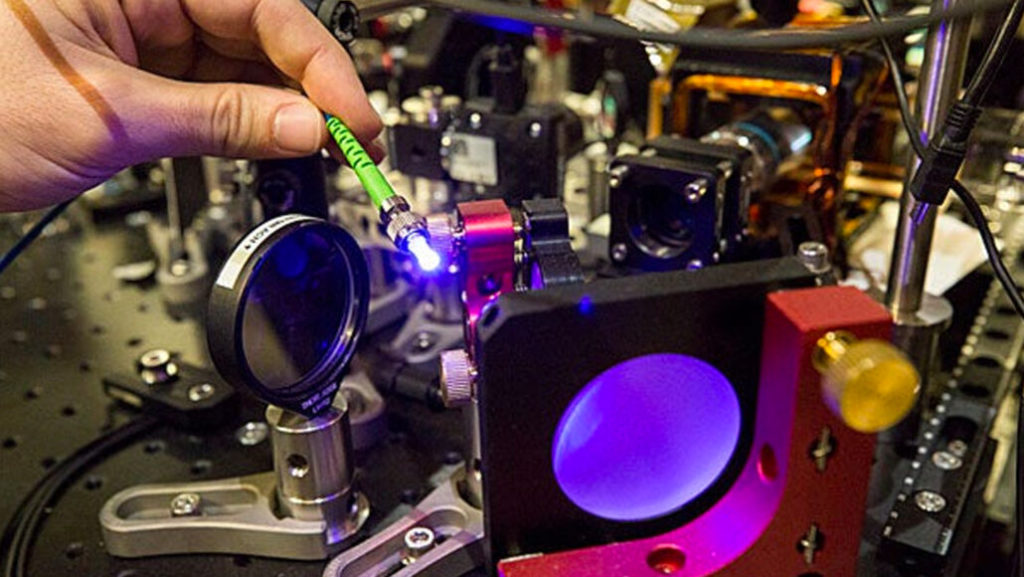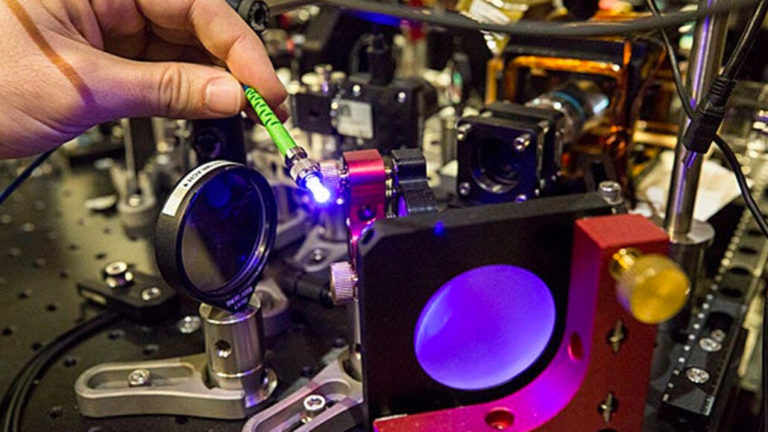Physicists have coaxed ultracold atoms into an elusive form of quantum matter
An elusive form of matter called a quantum spin liquid isn’t a liquid, and it doesn’t spin — but it sure is quantum.
Predicted nearly 50 years ago, quantum spin liquids have long evaded definitive detection in the laboratory. But now, a lattice of ultracold atoms held in place with lasers has shown hallmarks of the long-sought form of matter, researchers report in the Dec. 3 Science.
Quantum entanglement goes into overdrive in the newly fashioned material. Even atoms on opposite sides of the lattice share entanglement, or quantum links, meaning that the properties of distant atoms are correlated with one another. “It’s very, very entangled,” says physicist Giulia Semeghini of Harvard University, a coauthor of the new study. “If you pick any two points of your system, they are connected to each other through this huge entanglement.” This strong, long-range entanglement could prove useful for building quantum computers, the researchers say.
The new material matches predictions for a quantum spin liquid, although its makeup strays a bit from conventional expectations. While the traditional idea of a quantum spin liquid relies on the quantum property of spin, which gives atoms magnetic fields, the new material is based on different atomic quirks.
A standard quantum spin liquid should arise among atoms whose spins are in conflict. Spin causes atoms to act as tiny magnets. Normally, at low temperatures, those atoms would align their magnetic poles in a regular pattern. For example, if one atom points up, its neighbors point down. But if atoms are arranged in a triangle, for example, each atom has two neighbors that themselves point in opposite directions. That arrangement leaves the third one with nowhere to turn — it can’t oppose both of its neighbors at once.

So atoms in quantum spin liquids refuse to choose (SN: 9/21/21). Instead, the atoms wind up in a superposition, a quantum combination of spin up and down, and each atom’s state is linked with those of its compatriots. The atoms are constantly fluctuating and never settle down into an orderly arrangement of spins, similarly to how atoms in a normal liquid are scattered about rather than arranged in a regularly repeating pattern, hence the name.
Conclusive evidence of quantum spin liquids has been hard to come by in solid materials. In the new study, the researchers took a different tack: They created an artificial material composed of 219 trapped rubidium atoms cooled to a temperature of around 10 microkelvins (about –273.15° Celsius). The array of atoms, known as a programmable quantum simulator, allows scientists to fine-tune how atoms interact to investigate exotic forms of quantum matter.
In the new experiment, rather than the atoms’ spins being in opposition, a different property created disagreement. The researchers used lasers to put the atoms into Rydberg states, meaning one of an atom’s electrons is bumped to a very high energy level (SN: 8/29/16). If one atom is in a Rydberg state, its neighbors prefer not to be. That setup begets a Rydberg-or-not discord, analogous to the spin-up and -down battle in a traditional quantum spin liquid.
The scientists confirmed the quantum spin liquid effect by studying the properties of atoms that fell along loops traced through the material. According to quantum math, those atoms should have exhibited certain properties unique to quantum spin liquids. The results matched expectations for a quantum spin liquid and revealed that long-range entanglement was present.
Notably, the material’s entanglement is topological. That means it is described by a branch of mathematics called topology, in which an object is defined by certain geometrical properties, for example, its number of holes (SN: 10/4/16). Topology can protect information from being destroyed: A bagel that falls off the counter will still have exactly one hole, for example. This information-preserving feature could be a boon to quantum computers, which must grapple with fragile, easily destroyed quantum information that makes calculations subject to mistakes (SN: 6/22/20).
Whether the material truly qualifies as a quantum spin liquid, despite not being based on spin, depends on your choice of language, says theoretical physicist Christopher Laumann of Boston University, who was not involved with the study. Some physicists use the term “spin” to describe other systems with two possible options, because it has the same mathematics as atomic spins that can point either up or down. “Words have meaning, until they don’t,” he quips. It all depends how you spin them.
Do not forget to share your opinion with us to provide you with the best posts !




0 Comments